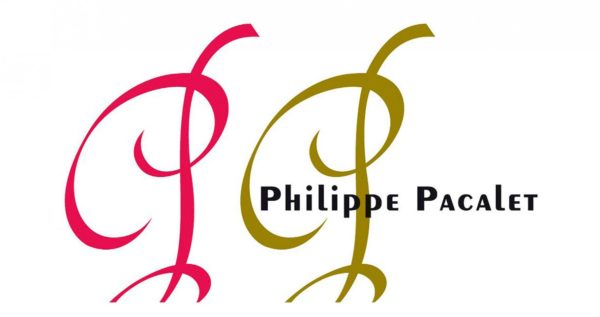
The Estate
Philippe Pacalet was born into a family of winemakers whose tradition in the craft dates back to 1780. He is an oenologist graduate who specialized in natural yeasts, majoring in organic viticulture and natural winemaking. Philippe had no shortage of role models starting out. He was mentored by Jules Chauvet, who is credited with building the basis of natural oenology and wine tasting. Furthermore, Philippe is the nephew of Marcel Lapierre, a legendary natural winemaker in Beaujolais. Following in both his mentor’s and his uncle’s footsteps, he has become one of the leading natural winemakers in Burgundy, producing wines with minimal intervention to ensure that the terroir is as transparent as possible in his selections.
Philippe began making his own wines in 2001 after 10 years of working for a distinguished estate in Côte de Nuits. He does not possess his own vineyards but is cautious to contract with growers who work organically and sustainably, following his own rigid set of beliefs. Philippe is an advocate for organic farming, as it allows for good fertility and high quality wild yeasts as well as the growth of microorganisms in the soil which helps to nourish the vines. He firmly feels that grape variety is also vital and having rootstock with good genetics that stem deeply in the soil makes a difference. Philippe produces wines from some of the most renowned appellations of Côte d’Or. Pommard, Gevrey-Chambertin, Meursault, ChambolleMusigny, Puligny-Montrachet, Vosne-Romanée and Nuits-Saint-Georges include some of the villages where he strategically chose vineyard parcels that parallel with the principles of his work.
Philippe personally supervises farming of these vineyards throughout each phase and ensures harvest is performed manually by his team. Being that terroir is of utmost importance to him, Philippe removes anything from the vinification process that can obscure the purity of the land, allowing each wine’s specific characteristics to shine through. His goal is to keep these factors as constant as possible so that the origin is expressed which he carries out by utilizing wild yeasts (of which one may find 30 different species in a vineyard creating diversity and consequently, complexity) to aid in fermentation and only using sulfur at bottling. All grapes are handpicked and undergo a strict selection while still in the vineyards before being transported to Philippe’s winery in Beaune where they are whole bunch fermented, undergo a lengthy maceration and the traditional foot stomping, which is known as pigeage in France. Aging always takes place on fine lees in used oak. Philippe’s overall philosophy is “Authenticity, Non-Interventionism and Cultural Experience.” All of his care and attention to detail results in unrivaled top quality wines of stunning clarity.
~BURGUNDY~
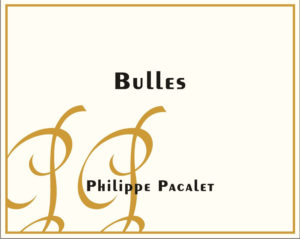
Bulles
Terroir: From vines in the commune of Boncourt le Bois planted with Aligoté (80%) and Pinot Noir (20%) on a soil rich in stones with a southeast exposure.
Grape Variety: Aligoté (colors slightly at the end of maturation) and Pinot Noir
Average Age of the Vines: 40 years old
Viticulture: Environmentally friendly and sustainable.
Vinification: Pressing of whole bunches with a light debourbage, after which all is placed in barrels immediately. Alcoholic fermentation with indigenous yeasts and malolactic in barrels.
Aging: On the lees, so-called “reduction” aging in barrels without racking. Riddling without SO2 for 5 months. “Prise de mousse” or foam creation from February 2019 on slats in bottles (traditional method).
Tasting Notes: Fleshy, fruity, mineral, and iodized. This wine has great freshness and a beautiful minerality.

Bâtard-Montrachet Grand Cru
Exposition: South / Southeast
Soil: Thick brown soils, rich in limestone and clay.
Grape Variety: 100% Chardonnay
Average Age of the Vines: 40 years old
Vinification: For the white wines, the act of treading grapes makes pressing easier. It also increases the extraction of phenolic compounds coming from the skin and the stems of whole bunches. This operation triggers the development of microorganisms (yeasts) by releasing juice from the grapes. Pacalet uses mechanical plate presses which are very interesting for yeast development, as they produce musts that are richer in nutrients. Pressing time was quite long – 6 hours on average. Juice settling lasted 12 hours maximum without temperature control in order to avoid selecting wild yeasts, which are so important to translate the richness of each terroir.
Tasting Notes: One of the kings of the white Burgundies, Bâtard Montrachet is a limpid and brilliant wine with a light-yellow color with green shades, tending to yellow gold with aging. Its complex nose shows toasted notes in its youth, associated with citrus and dried fruit aromas. On the palate, it is a powerful, rich wine – at the same time dense, tasty, generous, and lively, with an extremely fine and elegant finish.
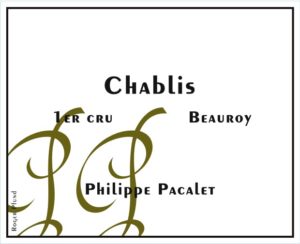
Chablis 1er Cru Beauroy
Soil & Climate: Clay and limestone, Kimmeridgian limestone made up of limestone and clay scree. South-facing vineyard.
Grape Variety: Chardonnay, qualitative rootstock.
Average Age of the Vines: 40 years old
Plant Density: 10,000 vines/ha
Yield: 35 hl/ha
Viticulture: Environmentally friendly and sustainable.
Vinification: Pressing of whole grapes with a light settling followed by immediate separation. Alcoholic fermentation with indigenous yeasts and malolactic in barrel.
Aging: On lees, so-called “reduction” aging without racking, with riddling (and without SO2) for 13 months.
Tasting Notes: Solar, fresh, and mineral. It presents notes of ripe fruits such as pineapple and citrus, but also peaches and iodine notes from its soil rich in fossil shells.
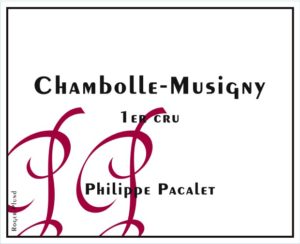
Chambolle-Musigny 1er Cru
Soil & Climate: Clay and limestone, placed on alluvium made up mainly of limestone and a little clay. The neighboring coast is in the shape of a semicircle which, despite the south-east orientation of the plots, brings a certain heat. The two climates are: 70% “Les Sentiers” and 30% “Les Feusselotes”.
Grape Variety: Pinot Noir fine type, qualitative rootstock 161-49.
Average Age of the Vines: 50 years old
Plant Density: 10,000 vines/ha
Yield: 35 hl/ha
Viticulture: Environmentally friendly and sustainable.
Vinification: Sorted in whole grape bunches. No SO2 with twice-daily punching down for 2.5 weeks. Alcoholic fermentation with indigenous yeasts without artificial thermoregulation. Malolactic fermentation in barrels.
Aging: On lees, so-called “reduction” aging without racking, with riddling (without SO2) for 16 months.
Tasting Notes: Sleek and charming. It is a wine with delicate scents of flowers: roses, violets, notes of tea, sandalwood, and fur. It is rich, complex, with structure on the finish.
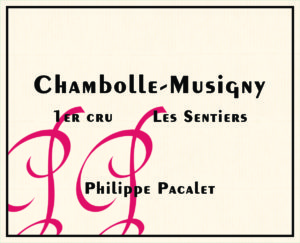
Chambolle-Musigny 1er Cru Les Sentiers
Soil: Clay-limestone, resting on alluvial deposits consisting mainly of limestone and a little clay.
Plot: Situated within the Bonnes Mares climat.
Grape Variety: Pinot noir, qualitative rootstock 161-49.
Average Age of the Vines: 55 years old
Plant Density: 10,000 vines/ha
Yield: 30 hl/ha
Viticulture: Sustainable and environmentally friendly cultivation
Vinification: Sorted in whole grape bunches. No SO2 with twice-daily punching down for 3 weeks. Alcoholic fermentation with indigenous yeasts without artificial thermoregulation. Malolactic fermentation in barrels.
Aging: On the lees for 16 months, reductive aging without racking or use of sulfur, with riddling.
Tasting Notes: Charming and sensual with a pleasant minerality. On the nose there is a bouquet of floral (hawthorn, rose, orchid) and fruity (raspberry) notes.
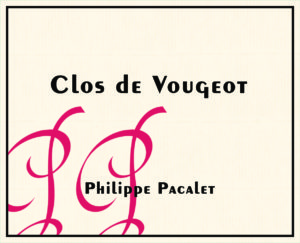
Clos de Vougeot Grand Cru
Soil & Climate: Clay and limestone. The plot is located in the Clos, on the Vosne-Romanée side; it stretches from the bottom of the wall to the “Les Maupertuis” climate. Three types of soil compose it: first clay, then a mixture of fossils and earth and then pebbles mixed with earth.
Grape Variety: Pinot Noir fine type, qualitative rootstock 161-49.
Average Age of the Vines: 50 years old
Plant Density: 10,000 vines/ha
Yield: 35 hl/ha
Viticulture: Environmentally friendly and sustainable.
Vinification: Sorted in whole grape bunches. No SO2 with twice-daily punching down for 3 weeks. Alcoholic fermentation with indigenous yeasts without artificial thermoregulation. Malolactic fermentation in barrels.
Aging: On lees, so-called “reduction” aging without racking, with riddling (without SO2) for 17 months.
Tasting Notes: Rich and structured; it is powerful, round and fresh. Its fruity notes (cherry, raspberry), licorice and sandalwood give it great depth and breadth.
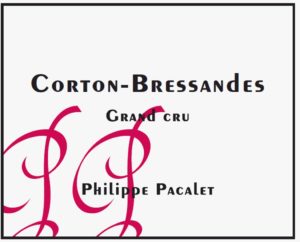
Corton-Bressandes Grand Cru
Soil & Climate: Clay and limestone; the plot, facing south-east, occupies 0.8 ha halfway up the slope.
Grape Variety: Pinot Noir fine type, qualitative rootstock 161-49.
Average Age of the Vines: 65 years old
Plant Density: 12,000 vines/ha
Yield: 32 hl/ha
Viticulture: Environmentally friendly and sustainable.
Average Age of the Vines: 65 years old
Plant Density: 10,000 vines/ha
Yield: 35 hl/ha
Viticulture: Environmentally friendly and sustainable.
Vinification: Whole grapes sorted without SO2 with twice-daily punching down for 3 weeks. Alcoholic fermentation with indigenous yeasts without artificial thermoregulation. Malolactic fermentation in barrels.
Aging: On lees, so-called “reduction” aging without racking, with riddling (without SO2) for 16 months in barrels.
Tasting Notes: Corton Bressandes Grand Cru offers a velvety substance (vine peach, red fruits) with ample charm, punctuated by smoky notes and sandalwood and enlivened by a fine minerality that stretches the finish. It is a combination of power and delicacy in a dense frame on notes of black fruits. Airy and aromatic, it draws its richness from a first-rate clay-limestone substrate. It is a wine of great finesse and beautiful structure.
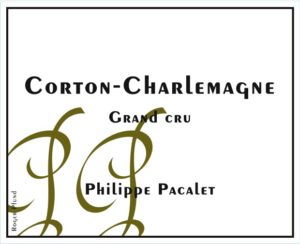
Corton-Charlemagne Grand Cru
Soil & Climate: Clay-limestone, majority limestone. Exposition to the southwest, steep slope.
Grape Variety: Chardonnay, qualitative rootstock.
Average Age of the Vines: 60 years old
Plant Density: 11,000 vines/ha
Yield: 35 hl/ha
Viticulture: Environmentally friendly and sustainable.
Vinification: The grape are pressed in bunches. A light débourbage, after which all is placed in barrel immediately. Alcoholic fermentation with indigenous yeasts and malolactic fermentation in barrel.
Aging: On lees, so-called “reduction” aging without racking, with riddling without SO2 for 14 months.
Tasting Notes: This wine which evolves slowly over time is ideal for cellaring. It has great precision and great vitality, with aromas of chamomile, gentian, anise, and cardamom to give it great complexity. Good length on the finish.

Échezeaux Grand Cru
Soil & Climate: Clay and limestone; soil with a sandy and ferric quality. It is a sunny and airy microclimate, exposed to the southeast, close to “Clos St Denis”.
Grape Variety: Pinot noir, qualitative rootstock 161-49.
Average Age of the Vines: 45 years old
Plant Density: 10,000 vines/ha
Yield: 33 hl/ha
Viticulture: Environmentally friendly and sustainable.
Vinification: Whole grapes sorted without SO2 with twice-daily punching down for 3 weeks. Alcoholic fermentation with indigenous yeasts without artificial thermoregulation. Malolactic fermentation in barrel.
Aging: On lees, so-called “reduction” aging without racking, with riddling without SO2 for 17 months.
Tasting Notes: A silk glove with an iron grip: this powerful and refined wine has energy! Its fruity (blackberry, raspberry) and flowery aromas (wild rose, iris), as well as notes of mignonette and sandalwood give it a deep complexity.
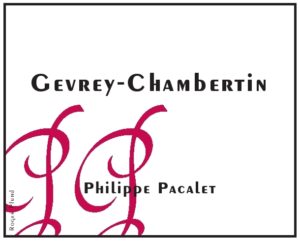
Gevrey-Chambertin
Soil & Climate: Clay and limestone; alluvial deposits made up of clay and pebbles on limestone rock. Southeast orientation, cool and sunny microclimate. Climates constituting the cuvée: “En Champs”, “Meix Bas”, “Seuvrées”, “Créots”, “La Platière”, and “Charreux”.
Grape Variety: Pinot noir, qualitative rootstock 161-49.
Average Age of the Vines: 50 years old
Plant Density: 10,000 vines/ha
Yield: 33 hl/ha
Viticulture: Environmentally friendly and sustainable.
Vinification: Whole grapes sorted without SO2 with twice-daily punching down for 3 weeks. Alcoholic fermentation with indigenous yeasts without artificial thermoregulation. Malolactic fermentation in barrel.
Aging: On lees, so-called “reduction” aging without racking, with riddling without SO2 for 13 months and then 3 months in foudre, or large wooden oak vat.
Tasting Notes: Round and structured, it is balanced and sensual. It is fruity with a beautiful tannic and mineral structure which gives it a fleshy and complex shape.
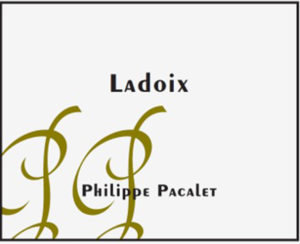
Ladoix Blanc
Terroir: The climat “Toppe d’Avignon” is situated on a gentle slop oriented towards the south. The clay soil rests on calcareous rocks called “Comblanchien”.
Grape Variety: Chardonnay, qualitative rootstock 161-49.
Average Age of the Vines: 30 years old
Plant Density: 10,000 vines/ha
Yield: 40 hl/ha
Viticulture: Environmentally friendly and sustainable.
Vinification: The grape are pressed in bunches. A light débourbage, after which all is placed in barrel immediately. Alcoholic fermentation with indigenous yeasts and malolactic fermentation in barrels.
Aging: Aging in barrels on the lies for 12 months, in reduction without racking, with riddling but without SO2.
Tasting Notes: Gourmet and fresh, its notes of grilled pears and flowers give way to a full, clear, and mineral palate.
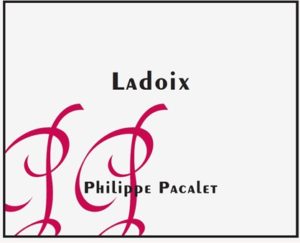
Ladoix Rouge
Soil & Climate: The “Champs Pussuet” climate is located on a gently sloping slope facing southeast. The ground is covered with limestone scree from the top of the Côte, red silt deposited in ice ages and rocks resulting from the alteration of the underlying geological layers.
Grape Variety: Pinot noir, qualitative rootstock 161-49.
Average Age of the Vines: 50 years old
Plant Density: 10,000 vines/ha
Yield: 40 hl/ha
Viticulture: Environmentally friendly and sustainable.
Vinification: Whole grapes sorted without SO2 with twice-daily punching down for 3 weeks. Alcoholic fermentation with indigenous yeasts without artificial thermoregulation. Malolactic fermentation in barrel.
Aging: On lees, so-called “reduction” aging without racking, with riddling without SO2 for 12 months and then 3 months in a foudre, or large wooden oak vat.
Tasting Notes: Its color is brilliant garnet with purplish reflections. Fruity notes (raspberries, cherries), elderberry, iris and spices (cloves). On the palate it is delicious, with a round and structured shape.
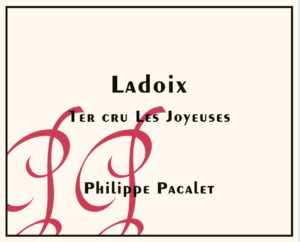
Ladoix 1er Cru Les Joyeuses
Terroir: Mid-slope on Corton Hill. Les Joyeuses translates to the “singing girls”. This plot is one of the best in Ladoix and is close to the border of Grand Cru Corton.
Soil: Small pebbles are found in red ferrous soil with some clay on a layer of hard limestone rock.
Average Age of the Vines: 55 years old
Plant Density: 10,000 vines/ha
Vinification: Spontaneously fermented with the entire stem structure, without temperature control. Malolactic fermentation in barrel.
Aging: In oak casks on the lees (in reduction) without racking for 16 months.
Tasting Notes: This 1er Cu is a refined representative of its terroir with floral notes and a tart fruitiness. Rich and full on the palate.
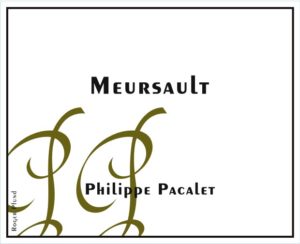
Meursault
Soil & Climate: Clay and limestone. Three climates make up this cuvée: “Les Vireuils du Dessus”, southeastern exposure with majority limestone soil; “Limozin”, under the Meursault Charmes; and “Les Grands Charrons”, a stony and hot place, southern exposure.
Grape Variety: Chardonnay, qualitative rootstock.
Average Age of the Vines: 45 years old
Plant Density: 10,000 vines/ha
Yield: 38 hl/ha
Viticulture: Environmentally friendly and sustainable.
Vinification: Pressing of whole grapes with a light settling followed by immediate separation. Alcoholic fermentation with indigenous yeasts and malolactic in barrel.
Aging: On lees, so-called “reduction” aging without racking, with riddling without SO2 for 13 months.
Tasting Notes: Rich and mineral, it has all the characteristics to refine with aging. Nice reduction on the nose (toasted hazelnuts) with notes of peppermint, verbena, and citron. Beautiful depth.
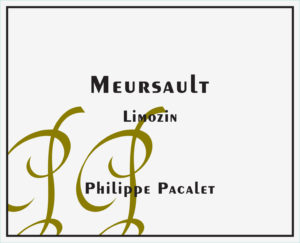
Meursault Limozin
Overview: This wine is produced from 3 plots enclosed in the Meursault 1er Cru “Genevrières” sector. It was decided to keep the Meursault Limozin apart from the regular Meursault blend due to its high-quality profile that stands on its own. It is a rich, complex, tasty wine that already presents an outstanding evolution potential in its early stages.
First Vintage: 2021
Exposition: Southwest
Grape Variety: 100% Chardonnay
Average Age of the Vines: 40 years old
Vinification: For the white wines, the act of treading grapes makes pressing easier. It also increases the extraction of phenolic compounds coming from the skin and the stems of whole bunches. This operation triggers the development of microorganisms (yeasts) by releasing juice from the grapes. Pacalet uses mechanical plate presses which are very interesting for yeast development, as they produce musts that are richer in nutrients. Pressing time was quite long – 6 hours on average. Juice settling lasted 12 hours maximum without temperature control in order to avoid selecting wild yeasts, which are so important to translate the richness of each terroir.
Aging: On lees, so-called “reduction” aging without racking, with riddling without SO2 for 13 months.

Moulin-à-Vent
Soil & Climate: Manganese granite, eroded on the surface in the form of pink sands and forming a granite arena called “gorrha”. Southeast orientation; the plots are located in the climates “Les Roches”, “La Delatte”, “Vierre Manin”, “Les Amandilliers”, & “La Grande Charrière”.
Grape Variety: Gamay Noir with white juice
Average Age of the Vines: 55 years old
Plant Density: 10,000 vines/ha
Yield: 38 hl/ha
Viticulture: Environmentally friendly and sustainable.
Vinification: Whole grapes sorted without SO2 with daily punching down for 3 weeks. Alcoholic fermentation with indigenous yeasts without artificial thermoregulation. Malolactic fermentation in foudres.
Aging: On lees, so-called “reduction” aging without racking, with riddling without SO2 for 16 months.
Tasting Notes: Beautiful dark red color. It is floral (violets, roses) and fruity (raspberry) with hints of licorice. It is a fleshy and powerful wine with a mineral tension due to manganese; it is elegant, charming, and structured. Appreciable now but best for cellaring.
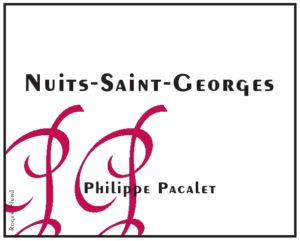
Nuits-Saint-Georges
Soil & Climate: Clay and limestone; on the surface a layer of pebbles and clay on limestone rock. Orientation is to the east, with a cool and sunny microclimate. his cuvée is made up of the “Bas de Combes”, “Les Fleurières”, and “Aux Lavières” climates.
Grape Variety: Pinot noir, qualitative rootstock 161-49.
Average Age of the Vines: 50 years old
Plant Density: 10,000 vines/ha
Yield: 35 hl/ha
Viticulture: Environmentally friendly and sustainable.
Vinification: Whole grapes sorted without SO2 with twice-daily punching down for 3 weeks. Alcoholic fermentation with indigenous yeasts without artificial thermoregulation. Malolactic fermentation in barrel.
Aging: On lees, so-called “reduction” aging in barrel without racking, riddling without SO2 for 16 months followed by aging in foudres for 2 months.
Tasting Notes: Structured, mineral, and rich wine. Its aromatic palette is both forthright and fruity: musky and spicy notes of red and black berries. On the palate, it is fleshy and tasty with a mineral touch that gives it nice body and depth.
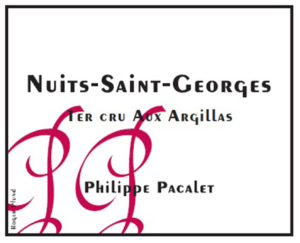
Nuits-Saint-Georges 1er Cru Aux Argillas
Terroir: Clay-limestone, on the surface a layer of pebbles and clay on limestone rock. Southeast orientation, cool and sunny microclimate.
Grape Variety: Pinot Noir, qualitative rootstock 161-49.
Average Age of the Vines: 60 years old
Plant Density: 12,000 vines/ha
Yield: 35 hl/ha
Viticulture: Environmentally friendly and sustainable.
Vinification: Whole grapes sorted without SO2 with punching down twice a day for 3 weeks. Alcoholic fermentation with indigenous yeasts without artificial thermoregulation. Malolactic fermentation in barrels.
Aging: On lees, so-called “reduction” aging without racking, with riddling without SO2 for 17 months.
Tasting Notes: Refined and mineral wine; it is precise, profound, and saline. The aromas are clear with fruity notes of red and black berries, sandalwood, rosewood, and wild flowers topped with a spicy touch.
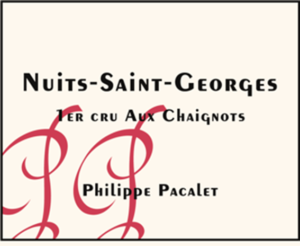
Nuits-Saint-Georges 1er Cru Aux Chaignots
Location: Aux Chaignots is situated on the Vosne side of the village.
Grape Variety: Pinot Noir
Vinification: 100% whole clusters are fermented with ambient yeasts in wooden vats.
Aging: 2 years in used oak barrels. Bottled by hand without fining or filtration.
Alcohol: 13.5%
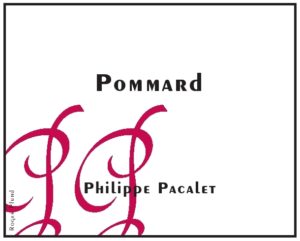
Pommard
Soil & Climate: Clay and limestone, on the surface, a mixture of pebbles and clay on limestone rock. Sloping vineyards facing south, warm and sunny microclimate. The climates are: “Vauxmuriens”, “La Vache”, and “Rugiens” village.
Grape Variety: Pinot noir, qualitative rootstock 161-49.
Average Age of the Vines: 50 years old
Plant Density: 10,000 vines/ha
Yield: 35 hl/ha
Viticulture: Environmentally friendly and sustainable.
Vinification: Whole grapes sorted without SO2 with twice-daily punching down for 3 weeks. Alcoholic fermentation with indigenous yeasts without artificial thermoregulation. Malolactic fermentation in barrel.
Aging: On lees, so-called “reduction” aging in barrel without racking, riddling without SO2 for 16 months followed by aging in foudres for 2 months.
Tasting Notes: Refined and fleshy wine. It is spicy, with notes of musk fruits (wild, ripe strawberries) and cedar wood. It is a seductive and complex wine.
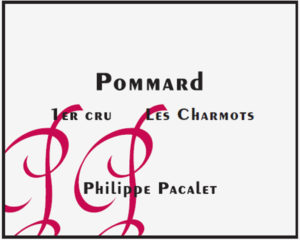
Pommard 1er Cru Les Charmots
Location: Just under 2 kilometers south of Beaune is the famous Pommard appellation, named after the place of the same name. It is in the northern part of the Côte de Beaune, and the middle part of the Côte d’Or. This region is known for some of the strongest wines in Burgundy.
Soil: Granite, sand
Climate: Semi-continental with a maritime influence
Grape Variety: 100% Pinot Noir
Vinification: For red wines, their seed lignification was very good, presenting a potential maturity around 12.5%. Tannins become ripe with maturation, but it is how grapes are handled in the winery that, above all, determines their quality. The grapes are vatted manually as soon as they arrive in the winery to preserve their integrity. Fermentations started after 5 days of whole bunch maceration and lasted 14 days on average. One daily “pigeage” led to a natural and soft maceration without thermoregulation, with temperatures going from 17°C to 29°C. This procedure allowed natural yeasts to work in the best conditions. Nice colors, beautiful scents and elegant, gourmand wines already qualify this vintage.
Tasting Notes: Aromas of ripe cherries framed by blackberries and black currants beguile the senses. The fine acidity and the lingering finish do the rest.
Serving Temperature: 16-18°C
Alcohol: 13%
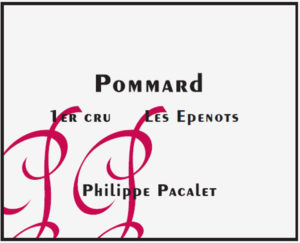
Pommard 1er Cru Les Epenots
Vineyard Plots: This wine is produced from a blend of 2 vineyards – 85% Grand Epenots and 15% Petit Epenots.
Vinification: The grapes are vatted manually as soon as they arrive in the winery to preserve their integrity. Fermentations started after 5 days of whole bunch maceration and lasted 15 days in average. One pigeage per day, leading to a gentle and longer maceration. The use of stems helps controlling the temperature without any external thermoregulation. Temperatures varied from 17 to 31 degrees Celsius, which allowed natural yeasts to work in the best conditions.
Tasting Notes: Gorgeous ruby color, remarkable parfum and a fleshy structure.
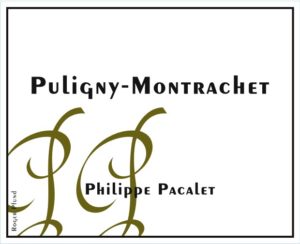
Puligny-Montrachet
Soil & Climate: Clay and limestone, fairly clayey. Southeast orientation, cool microclimate. Climates “Les Noyers Brets”, “Le Trezin”, and “Les Petits Noizerots”.
Grape Variety: Chardonnay, qualitative rootstock.
Average Age of the Vines: 45 years old
Plant Density: 10,000 vines/ha
Yield: 35 hl/ha
Viticulture: Environmentally friendly and sustainable.
Vinification: Pressing of whole grapes with a light settling followed by immediate separation. Alcoholic fermentation with indigenous yeasts and malolactic in barrel.
Aging: On lees, so-called “reduction” aging without racking, with riddling without SO2 for 13 months. Bottling by hand.
Tasting Notes: Elegant and mineral, this wine is charming and precise in its youth. With notes of peach, citron, acacia flowers, and hawthorn, it stretches and takes shape over time.
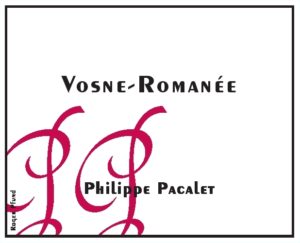
Vosne-Romanée
Soil: Clay-limestone, rich in silt
Exposition: Southeast
Vineyard Plots: This cuvee is composed of two climats: “Au-Dessus de la Rivière” and “Les Chalandins”.
Grape Variety: Pinot Noir
Average Age of the Vines: 60 years old
Vine Density: 10,000 vines/ha
Yield: 30 hl/ha
Vinification: Whole harvests sorted without SO2. Punching down twice daily for 3 weeks. Alcoholic fermentation with native yeasts without artificial thermoregulation. Partial malolactic fermentation.
Aging: On lees, partial “reduction” aging without racking. Riddling without SO2 for 16 months.
Tasting Notes: First discreet then elegant and rich, it opens to those who are patient. Its fruity (raspberry, blackberry), floral (rosehip), sandalwood, and spice notes give it a serious and seductive side.

Vosne-Romanée 1er Cru Les Petits Monts
Location: Situated at the top of the hill, this 50-year-old plot is next to “Cros Parentoux” and above Richebourg.
Vinification: The grapes are vatted manually as soon as they arrive in the winery to preserve their integrity. Fermentations started after 5 days of whole bunch maceration and lasted 15 days in average. One pigeage per day, leading to a gentle and longer maceration. The use of stems helps controlling the temperature without any external thermoregulation. Temperatures varied from 17 to 31 degrees Celsius, which allowed natural yeasts to work in the best conditions.
Tasting Notes: This wine is rich and elegant, with great length.
~RHONE VALLEY~
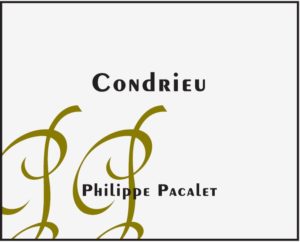
Condrieu
Location: Above the Rhône on a stony granite plateau in the “le Tinal” plot
Exposition: South
Soil: Granite
Climate: Semi-continental climate with oceanic influence
Altitude: 150 – 400 meters above sea level
Average Age of the Vines: 35 years old
Grape Variety: Viognier
Yield: 30 hl/ha
Viticulture: Sustainable
Vinification: Whole grape pressing, spontaneously fermented without temperature control and malolactic fermentation in the barrel.
Aging: 12 months on the fine lees in used barrels. Minimal sulfurization just before bottling.
Tasting Notes: Lush, captivating, exotic nose with aromas of vineyard peach, ripe apricots, herbs, and sweet pears. Robust minerality on the palate.
Serving Suggestion: Drink at 14-16 °C
Cellaring: 10-15 years
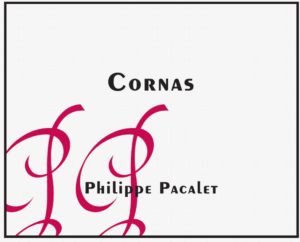
Cornas
Soil & Climate: Granite, eroded on the surface in the form of sands. South / southeast orientation; the plots are located in the “Saint Pierre” and “Mazard” climates.
Altitude: 380 m
Grape Variety: Syrah Noire Petite Serine (a clone of Syrah)
Average Age of the Vines: 40 years old
Plant Density: 7,500 vines/ha
Yield: 31 hl/ha
Viticulture: Environmentally friendly and sustainable.
Vinification: Whole grapes sorted without SO2 with twice-daily punching down for 3 weeks. Alcoholic fermentation with indigenous yeasts without artificial thermoregulation. Malolactic fermentation in barrel.
Aging: On lees, so-called “reduction” aging in barrel without racking, riddling without SO2 for 16 months.
Tasting Notes: Elegant, rich, and mineral wine with a beautiful plum color. It is slightly spicy and fruity (peaches) with floral notes of violet and licorice. It is velvety, tannic, and tasty.


